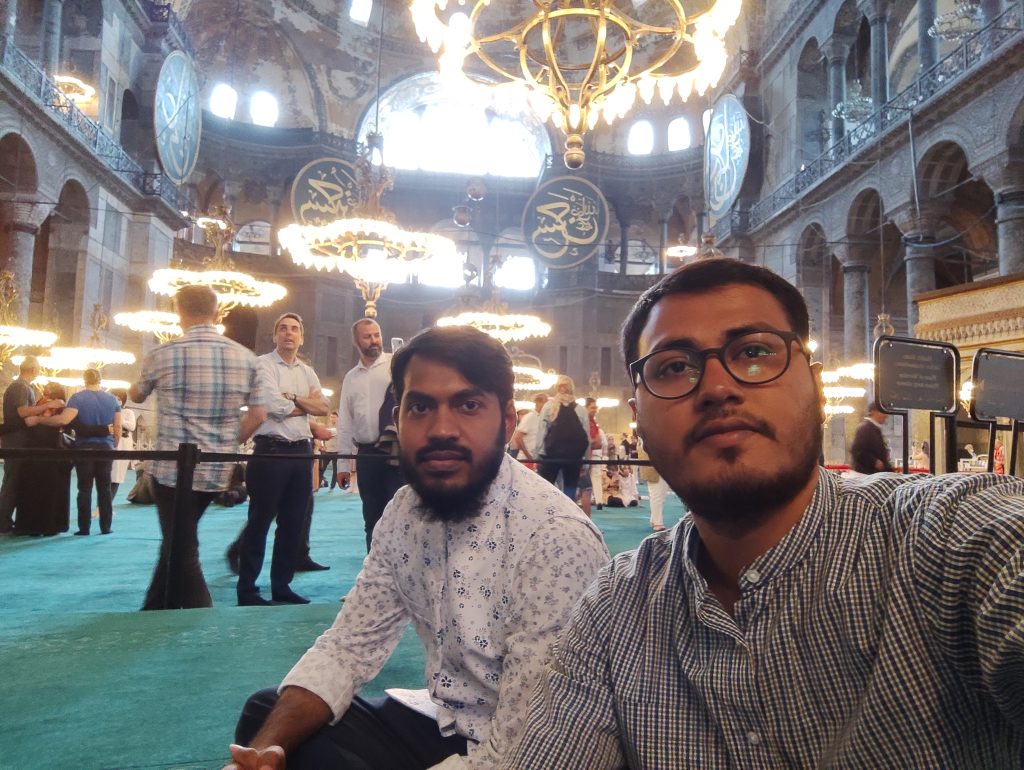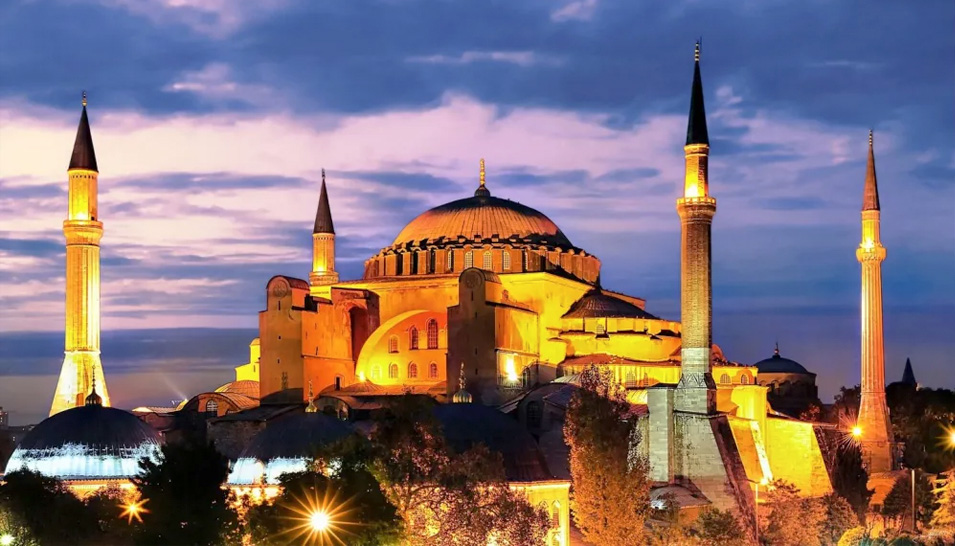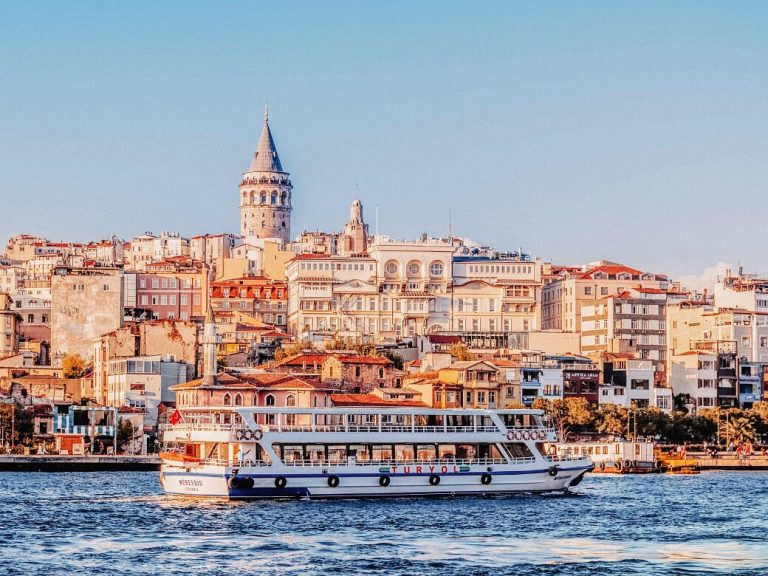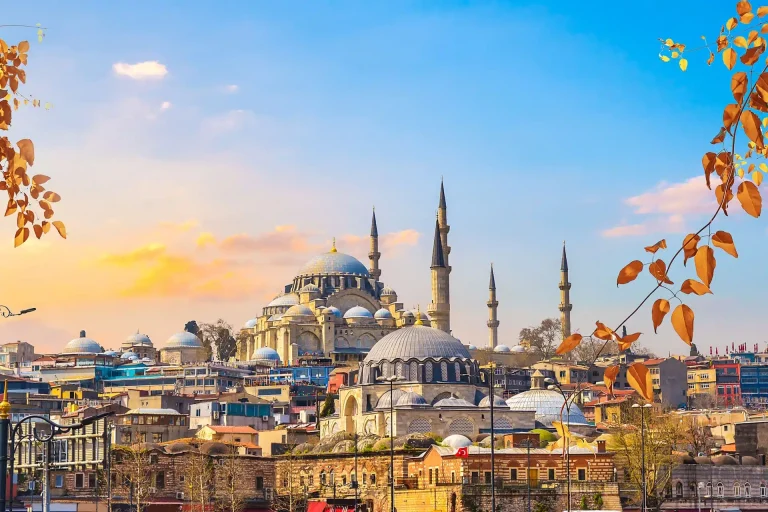
Hagia Sophia, an architectural marvel nestled in the heart of Istanbul, Turkey, holds within its walls a rich tapestry of history, spirituality, and cultural significance. Built over centuries and witness to the rise and fall of empires, this iconic structure has stood as a symbol of both Christian and Islamic faiths, reflecting the diverse heritage of the region.
The construction of Hagia Sophia:
The construction of Hagia Sophia was ordered in 532 AD by the Byzantine Emperor Justinian I, who started the building process in the sixth century. Designed by architects Anthemius of Tralles and Isidore of Miletus, this grand basilica was intended to be the largest and most splendid church in the Christian world. Its name, Hagia Sophia, translates to “Holy Wisdom” in Greek, reflecting the spiritual aspirations of its builders.
Completed in just five years, its emerged as a masterpiece of Byzantine architecture, blending elements of classical Roman design with innovative engineering techniques. Its massive dome, soaring to a height of 55 meters (180 feet), was a feat of engineering prowess and remained the largest in the world for nearly a millennium. Adorned with intricate mosaics, marble columns, and lavish decorations, the interior of Hagia Sophia exuded a sense of divine splendor befitting its sacred purpose.
The witness of History
For nearly a thousand years, Hagia Sophia served as the principal cathedral of the Byzantine Empire, witnessing coronations, imperial ceremonies, and religious rituals. However, its fate took a dramatic turn in 1453 when the Ottoman Turks, under the leadership of Sultan Mehmed II, captured Constantinople (modern-day Istanbul) and converted Hagia Sophia into a mosque.
Under Ottoman rule, Hagia Sophia underwent significant alterations to accommodate Islamic worship practices. Minarets were added to the exterior, while the interior was adorned with calligraphic inscriptions and Islamic motifs. Despite these modifications, many of the original Byzantine elements were preserved, creating a unique fusion of Christian and Islamic aesthetics.
Transformed into a museum
For over four centuries, Hagia Sophia remained a functioning mosque and a symbol of Ottoman imperial grandeur. However, in the early 20th century, following the collapse of the Ottoman Empire and the establishment of the Republic of Turkey, the secular government led by Mustafa Kemal Atatürk initiated a series of reforms aimed at modernizing the country.
As part of these reforms, it was transformed into a museum in 1935 by the decree of Atatürk, reflecting Turkey’s commitment to secularism and cultural heritage preservation. This decision marked a pivotal moment in the history of Hagia Sophia, allowing visitors from around the world to marvel at its architectural splendor and appreciate its historical significance.
The museum back into a mosque.
For nearly nine decades, Hagia Sophia served as a museum, attracting millions of tourists each year and standing as a symbol of Turkey’s rich multicultural heritage. However, in July 2020, another chapter unfolded in the saga of Hagia Sophia when Turkish President Recep Tayyip Erdoğan signed a decree converting the museum back into a mosque.
This decision sparked international debate and drew criticism from various quarters, with concerns raised about the preservation of it’s cultural and religious heritage. Despite these controversies, Hagia Sophia once again opened its doors for Islamic worship, reaffirming its status as a sacred space for believers while continuing to captivate the imagination of people worldwide.
Today, Hagia Sophia stands as a testament to the enduring legacy of human ingenuity and the interconnectedness of diverse cultures and faiths. Its majestic domes, intricate mosaics, and storied history continue to inspire awe and wonder, reminding us of the power of architecture to transcend time and unite humanity in reverence for the divine. Whether as a church, mosque, or museum, Hagia Sophia remains a symbol of resilience, adaptation, and the enduring quest for spiritual enlightenment.



